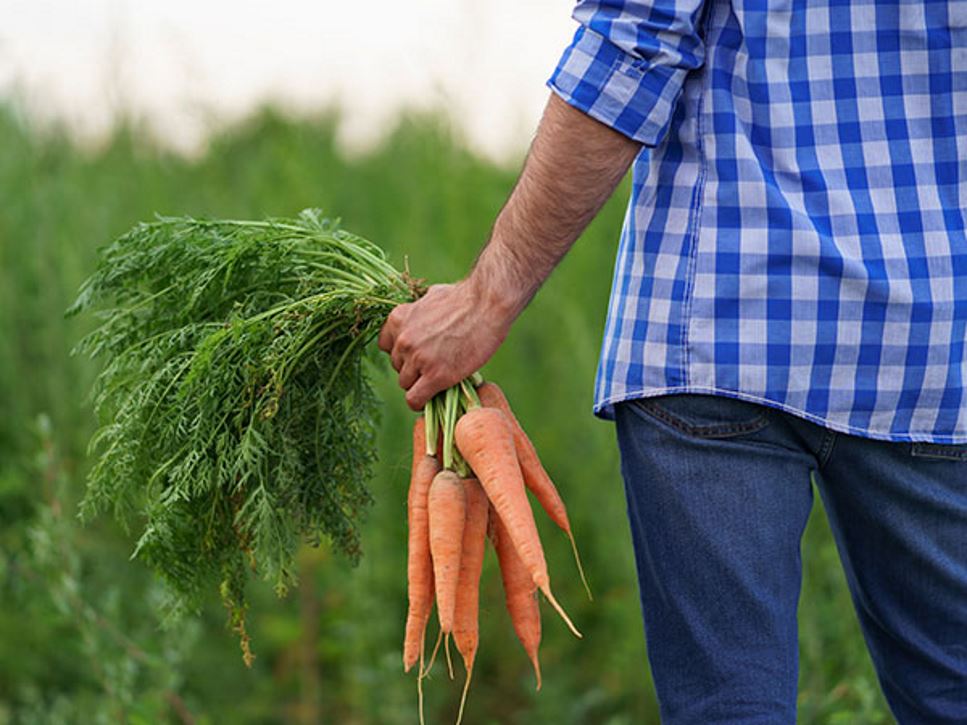Ever thought about how food gets from the farm to the supermarket and ultimately onto your plate? Whether it’s a plant-based or animal-based food, there’s a process that involves many systems including manufacturing and transportation, and it often involves countries around the world. Let’s explore plant-based and animal-based foods, including what they are, how they’re produced and where they come from.
Plant foods
Simply put, plant foods come from seeds. Some seeds can be eaten on their own, such as sunflower seeds, but most grow into plants. The edible portions of those plants are considered “plant foods.” Some plant foods grow on trees, while others grow on bushes or vines — some even grow underground or in the water.
Each variety of plant grows best in a specific climate, so it’s important that farmers know how to help each of their crops grow well. The United States produces a variety of crops such as corn, wheat and potatoes, but these (and other foods) are also grown throughout the world and may be sent to the U.S. during different times of year. Sometimes food travels far distances by train, airplane or cargo ships to get to your local store.
Some foods that come from plants include:
- Beans and other legumes, such as peanuts and soy
- Nuts and seeds, such as walnuts, almonds, pistachios and sesame
- Fruits such as berries, peaches, plums, apples, pears, citrus and tropical fruit such as pineapples and bananas
- Grains including rice, oats, quinoa, barley and wheat
- Vegetables such as leafy greens, cucumbers, tomatoes, peppers, potatoes, carrots, corn, broccoli
Plant foods also may be used to make other products such as oil (for example corn, peanut, canola and avocado oils). Additionally, plant foods can be combined to create other commonly eaten foods. For example, wheat can be used to make pasta, crackers or bread, and rice can be used to make plant-based beverages, cereal or noodles.
Animal foods
Animal foods include any food that comes from an animal, such as milk or meat. Animals and other animal products are raised and processed on farms, factories and lots. Sometimes they are raised and slaughtered in the same location, while other times they are raised in one place, then shipped via truck or train somewhere else to be processed for food. Fish and shellfish can be caught in the wild or farmed in the ocean, rivers or tanks.
Some foods that come from animals include:
- Dairy milk, yogurt and cheese
- Eggs
- Meat from land animals including cows, pigs and sheep
- Poultry from chickens and turkeys
- Fish and shellfish
- Honey
- Collagen or gelatin
- Sour cream, butter, ice cream
Like plant foods, animal foods often are ingredients in familiar foods. Eggs are used to make noodles, cakes, cookies and baked goods, such as bread. Dairy products can be used to make chocolate and other desserts or incorporated into baked goods such as bread, muffins and croissants. Dairy is often included in salad dressings and sauces. Animal collagen is used to create gelatin, which is an ingredient in many puddings, gum and candy, among other foods.
Where in the world does food come from?
Although the United States imports (brings in) many foods, the country's diverse soils and environments allow us to grow and export (send away) many foods. In fact, in 2016, close to 90% of the food and beverage products consumed in America were produced in the U.S. According to the USDA, in 2021 the top five producing states were California, Iowa, Nebraska, Texas and Minnesota and the leading farm products in the U.S. were cattle, corn, soybeans, milk and other dairy products, chicken, pigs and wheat.
The U.S. sends food to other countries as well. In fact, 2022 was the highest export year ever for U.S. agriculture for food products. The top five areas the U.S. exports to include China, Mexico, Canada, Japan and the European Union. The United States also imports food from countries around the world. For example, barley, chickpeas and almonds may come from the Mediterranean region and West Africa. Soybeans may be imported from East Asia, and corn and avocados are often imported from Mexico and Central America.
Countries around the world, including the U.S., can influence the selection of foods that are available to consumers by participating in agricultural trade. Studies have shown that countries have relied on each other for up to 69% of the crops they use. This demonstrates a global connection that centers around food.
Find a Nutrition Expert
Looking for credible nutrition information and recommendations? The Academy of Nutrition and Dietetics' network of credentialed food and nutrition practitioners are ready to help!

